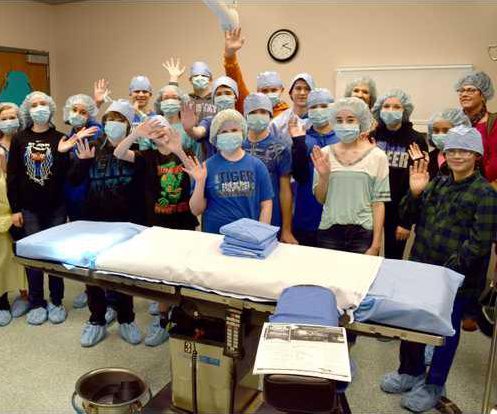SPOTLIGHT ON EHF’S KAREN SESSLER
Karen Sessler is president of the Ellinwood Hospital Foundation. She grew up in Topeka, but moved to Ellinwood when she married. She now lives on a farm south of Ellinwood.
Tell us about your family
“My husband, Marvin, and I have one daughter, one son. We also have a granddaughter attending college at Kansas State University--she’s a fourth generation Wildcat!”
How long have you been involved with the foundation?
“I’ve been involved since 1987.”
What first drew you to health?
“My degree is in education. In 1987, I took a position at Ellinwood Hospital as the Education Director.”
What are your hobbies?
“I enjoy watching K-State sports, spending time with my grandkids, and I look forward to traveling more in the future.”
What first drew you to this type of work?
“As part of the staff at Ellinwood Hospital, I’ve seen lives saved because patients didn’t have to travel a long way to get care. We have excellent doctors and very caring staff members, and that’s something small town hospitals excel at.”
What do you most enjoy about what you do?
“The foundation helps to connect the community to the hospital. Our foundation helps the hospital to provide all the services our patients need so they can get the best care possible close to home. And if they have to go out of the area to have some procedures done, they can come back here to recover. That’s especially important for our elderly. I can’t imagine our elderly not having hospital access close to home.”
ELLINWOOD — Ellinwood Hospital’s Area Health Foundation underwent a major foundational change, coinciding with the 2015 hiring of a hospital CEO, Kile Magner.
In welcoming Magner, the Foundation began to look at opportunities for growth.
“A foundation is an essential piece of any non-profit hospital,” Magner said. “Our Foundation has already created a lasting legacy. By increasing its scope, we can work together to complete some significant projects.”
The Foundation reorganized as the Ellinwood Hospital Foundation, making it easier to identify the mission and cause the Foundation supports: the entire health of our local communities, through the services and programs offered at the hospital and clinic.
The Foundation did this by revising its governing documents with an eye towards future growth, better meeting modern philanthropic standards, and allowing for an executive director.
Lindsey Bogner, of Odin, was officially appointed the executive director at the Foundation’s regular meeting in October. Hired as the community relations director at Ellinwood Hospital and Clinic in July, she was a good fit. She directs all public relations activities and helps to increase engagement within the communities the hospital serves.
By reorganizing and bringing in an executive director, the Foundation can now spend more time searching for appropriate grants, applying for tax credits and other government funding, and fundraising. It aims to offer donors three things: a reason to donate, a method to donate, and the resources for them to make educated decisions when investing and making charitable gifts.
“My main focus for the Foundation is to increase support,” Bogner said. “It’s imperative that we support our local hospital and help it thrive. We can do that three ways: becoming a patient, becoming a donor, or becoming a volunteer.”
Growing support for the hospital starts early in life, so to kick off a new community education initiative, she arranged a Teddy Bear Clinic in November for Ellinwood Grade School and St. John’s Catholic School students. This gave students an opportunity to become acquainted with what happens in a hospital and to learn the importance of having hospitals in rural areas. Other community education opportunities are planned for the future, including one in March to introduce the community to a new internet medicine service coming to Ellinwood Hospital.
Growing a larger pool of volunteers is the next step in the Foundation and Hospital’s plans. By starting a volunteering program to allow individuals and groups to volunteer at the hospital, it allows for better patient experiences.
“Bringing in volunteers lets our patients know that it’s not just the nurses and providers that look after them. It’s the entire community,” Magner said. “It lets them know they haven’t been forgotten.”





